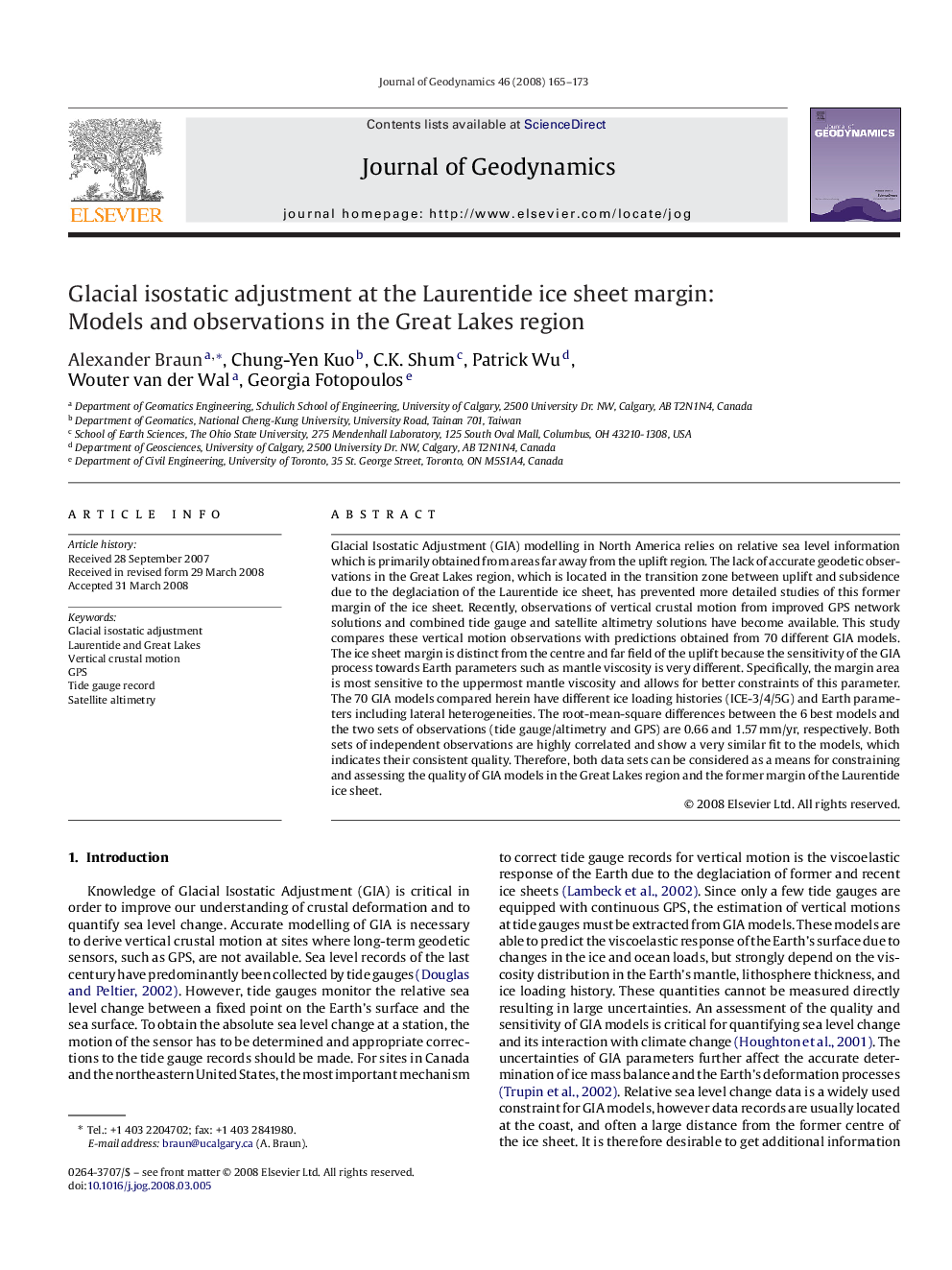| Article ID | Journal | Published Year | Pages | File Type |
|---|---|---|---|---|
| 4688690 | Journal of Geodynamics | 2008 | 9 Pages |
Glacial Isostatic Adjustment (GIA) modelling in North America relies on relative sea level information which is primarily obtained from areas far away from the uplift region. The lack of accurate geodetic observations in the Great Lakes region, which is located in the transition zone between uplift and subsidence due to the deglaciation of the Laurentide ice sheet, has prevented more detailed studies of this former margin of the ice sheet. Recently, observations of vertical crustal motion from improved GPS network solutions and combined tide gauge and satellite altimetry solutions have become available. This study compares these vertical motion observations with predictions obtained from 70 different GIA models. The ice sheet margin is distinct from the centre and far field of the uplift because the sensitivity of the GIA process towards Earth parameters such as mantle viscosity is very different. Specifically, the margin area is most sensitive to the uppermost mantle viscosity and allows for better constraints of this parameter. The 70 GIA models compared herein have different ice loading histories (ICE-3/4/5G) and Earth parameters including lateral heterogeneities. The root-mean-square differences between the 6 best models and the two sets of observations (tide gauge/altimetry and GPS) are 0.66 and 1.57 mm/yr, respectively. Both sets of independent observations are highly correlated and show a very similar fit to the models, which indicates their consistent quality. Therefore, both data sets can be considered as a means for constraining and assessing the quality of GIA models in the Great Lakes region and the former margin of the Laurentide ice sheet.
